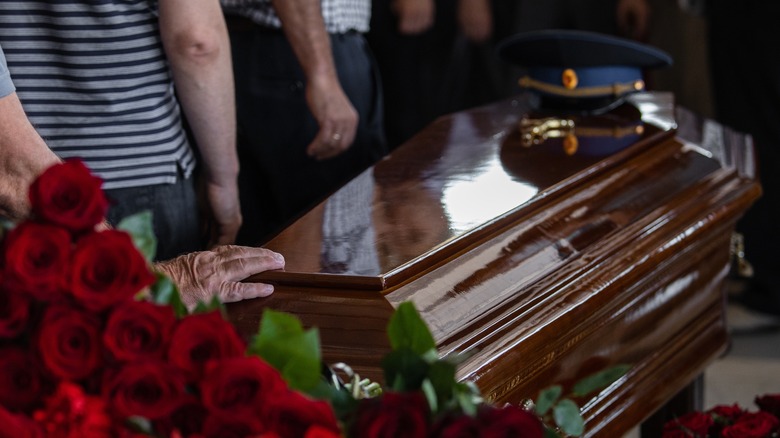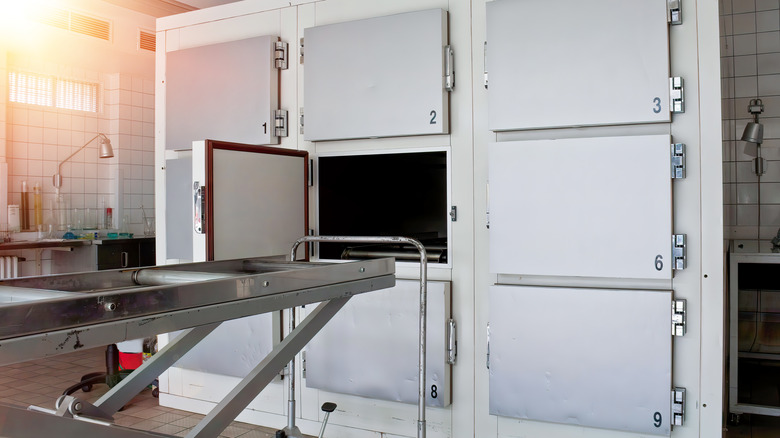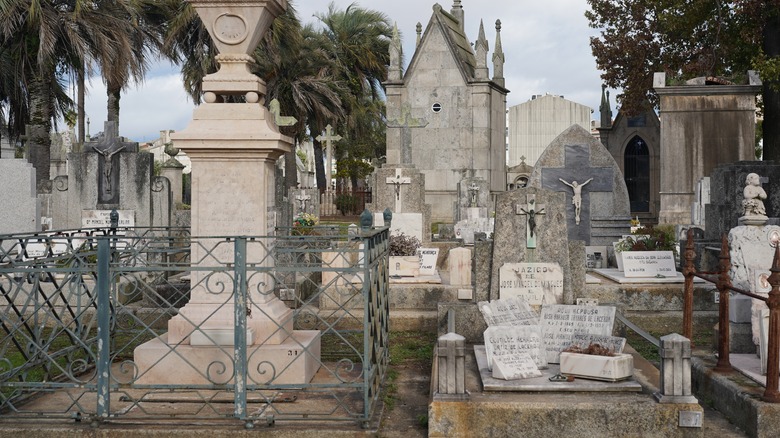The Normal (Yet Disturbing) Side Effect Of Death You Probably Don't Want To Know About
Death: it's a part of life, or as William Shakespeare described it, "the undiscovered country." For those approaching their end of life, that process is sometimes called a journey, according to The Art of Dying Well. And as BBC Future points out, that continues even after our final breath leaves our body. Some stages after death, such as rigor mortis, or the stiffening of a dead body, are well known. Others may come as a surprise. Regardless, post-death biological stages — and what causes them — are unpleasant, though fascinating, to think about.
One side effect of death that occurs only a short while after we die is seeping blisters that form on the skin. These lesions appear in the very first stage that our remains go through post-mortem: autolysis, which is when our bodies begin to break down from the inside. This happens to our bodies because after death — just like in life — our bodies are filled with living organisms like bacteria and microbes, as well as biological substances like enzymes. Once we're biologically dead, all the aforementioned slowly begin to take us over as we undergo one final transformation.
Blisters also appear on our internal organs
Before those blisters appear on our skin at the point of what's called biological death, our internal organs — including brains, liver, and heart — are completely deprived of oxygen. This causes an acid build-up in certain parts of our bodies as enzymes escape — especially from the liver — while our corpse otherwise begins to decompose on a cellular level. Bacteria, particularly in our stomachs and intestines, which are typically kept in check by our living system, also emerge and begin to run rampant. This all happens around the same time as rigor mortis sets in.
Part of that process so far described includes a number of biological functions as living bacteria and other microbes begin to effectively digest our bodies from the inside. Around this same time, our skin becomes discolored and begins to sag. In the meantime, through this natural series of events, a number of biological substances are produced. That buildup has no place to go, which causes a cadaver to eventually bloat as blisters also begin to appear on many internal organs, according to "Postmortem Changes."
External blisters appear anywhere from 18 to 36 hours after death
As the natural process of external and internal organisms continues to decompose our dead bodies, blisters — often oozing — appear on the skin, which can sometimes give a dead body a kind of sheen. This part of the process typically happens anywhere from around 18 to 36 hours after death. The timeline of putrefaction — or the decomposition of our dead bodies — can vary, depending on the circumstances and conditions surrounding the person's death, what happens to the body after passing, and how quickly those remains are attended to.
When left to go about the natural process of decomposition, what's been so far described begins almost immediately, and a human body could be nothing more than a skeleton in only two weeks. Meanwhile, when bodies are embalmed and buried in a casket, so-called "skeletonization" may take years, according to Scientific American. Death, in all its detail, is part of the natural order. From the final goodbye to the process of blisters emerging on our skin and final decomposition, understanding it all might help some accept its eventuality — luckily, though, as far as our own death is concerned, none of us are around to see it.


